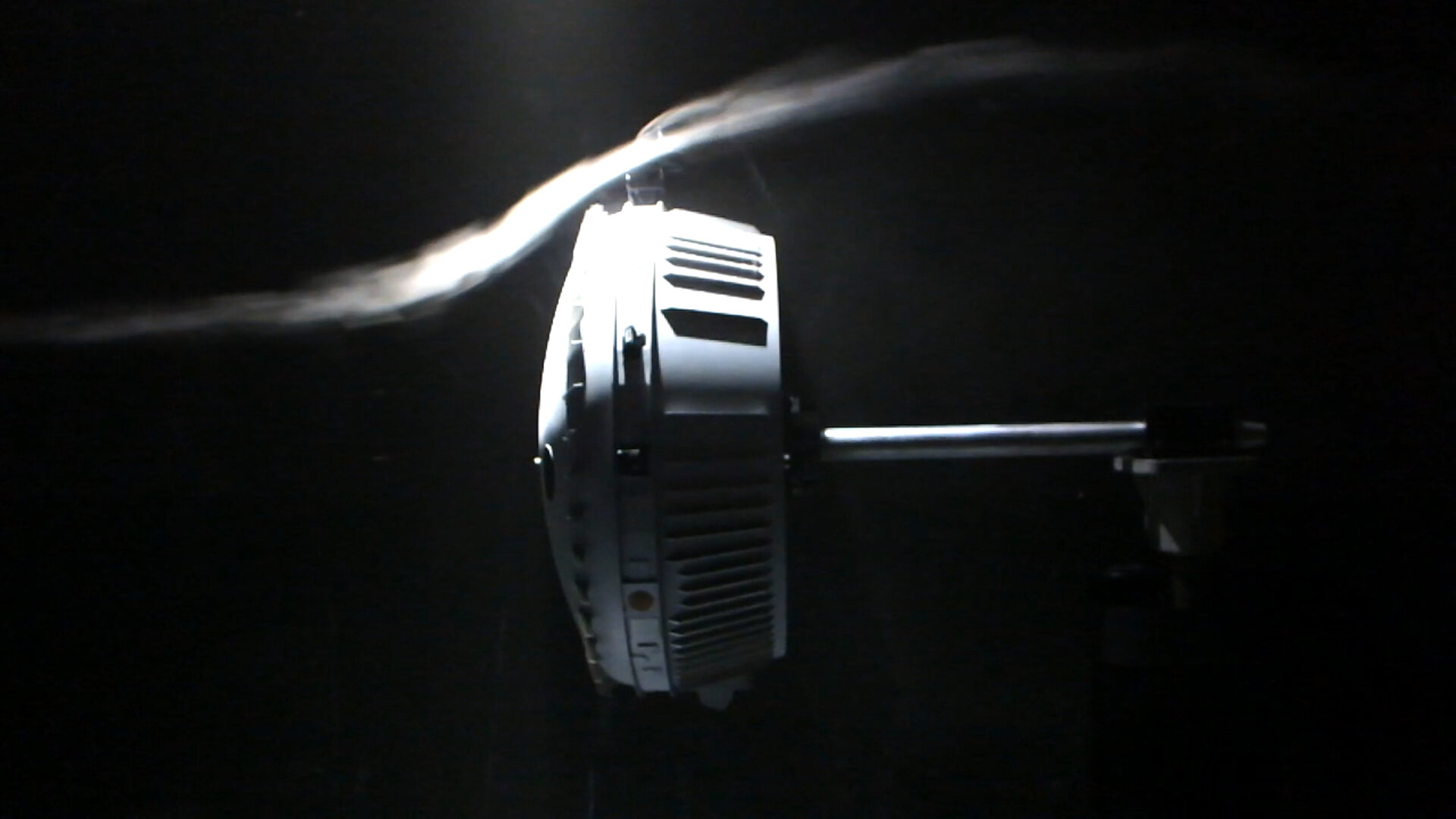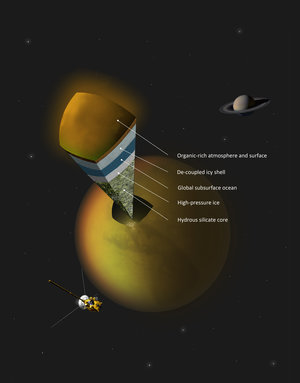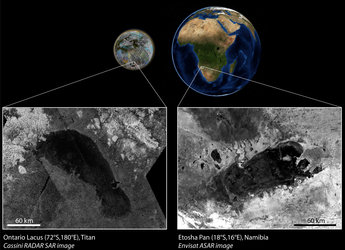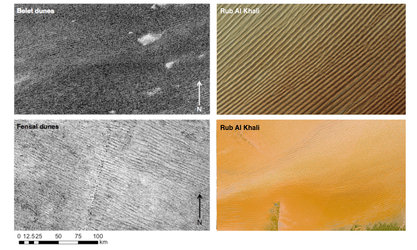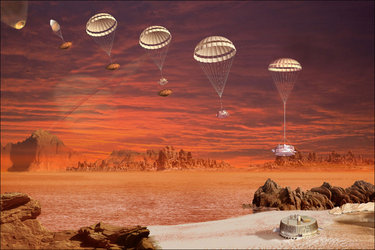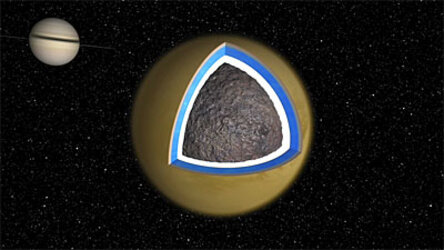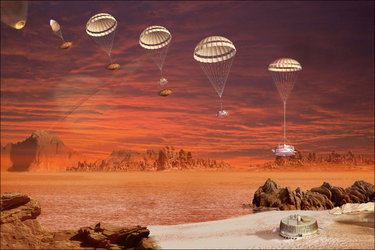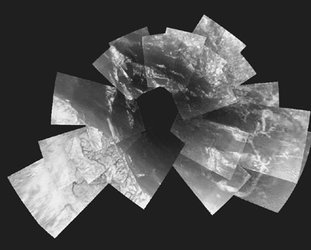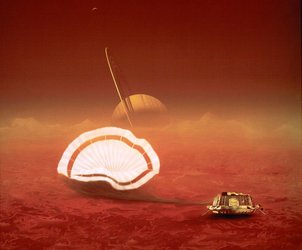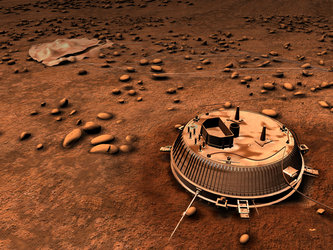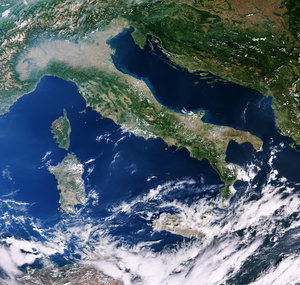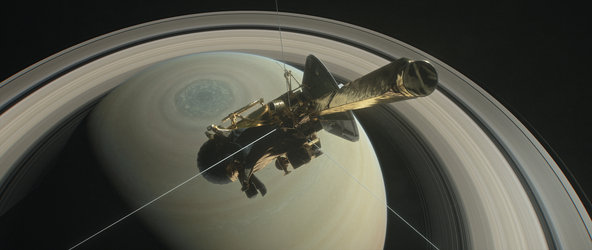Huygens landing spin mystery solved
Fifteen years ago today, ESA’s Huygens probe made history when it descended to the surface of Saturn’s moon Titan and became the first probe to successfully land on another world in the outer Solar System. However, during its descent, the probe began spinning the wrong way – and recent tests now reveal why.
Launched in 1997, the NASA/ESA/ASI Cassini-Huygens mission remains iconic and has contributed an enormous amount to our understanding of Saturn and its moon Titan since its arrival at the ringed planet in late 2004.
The mission comprised an orbiter, Cassini, which went on to orbit Saturn for over 13 years after becoming the first spacecraft to do so, and a small atmospheric probe, ESA’s Huygens lander, which headed down to explore the physical properties and atmosphere of Titan on 14 January 2005.

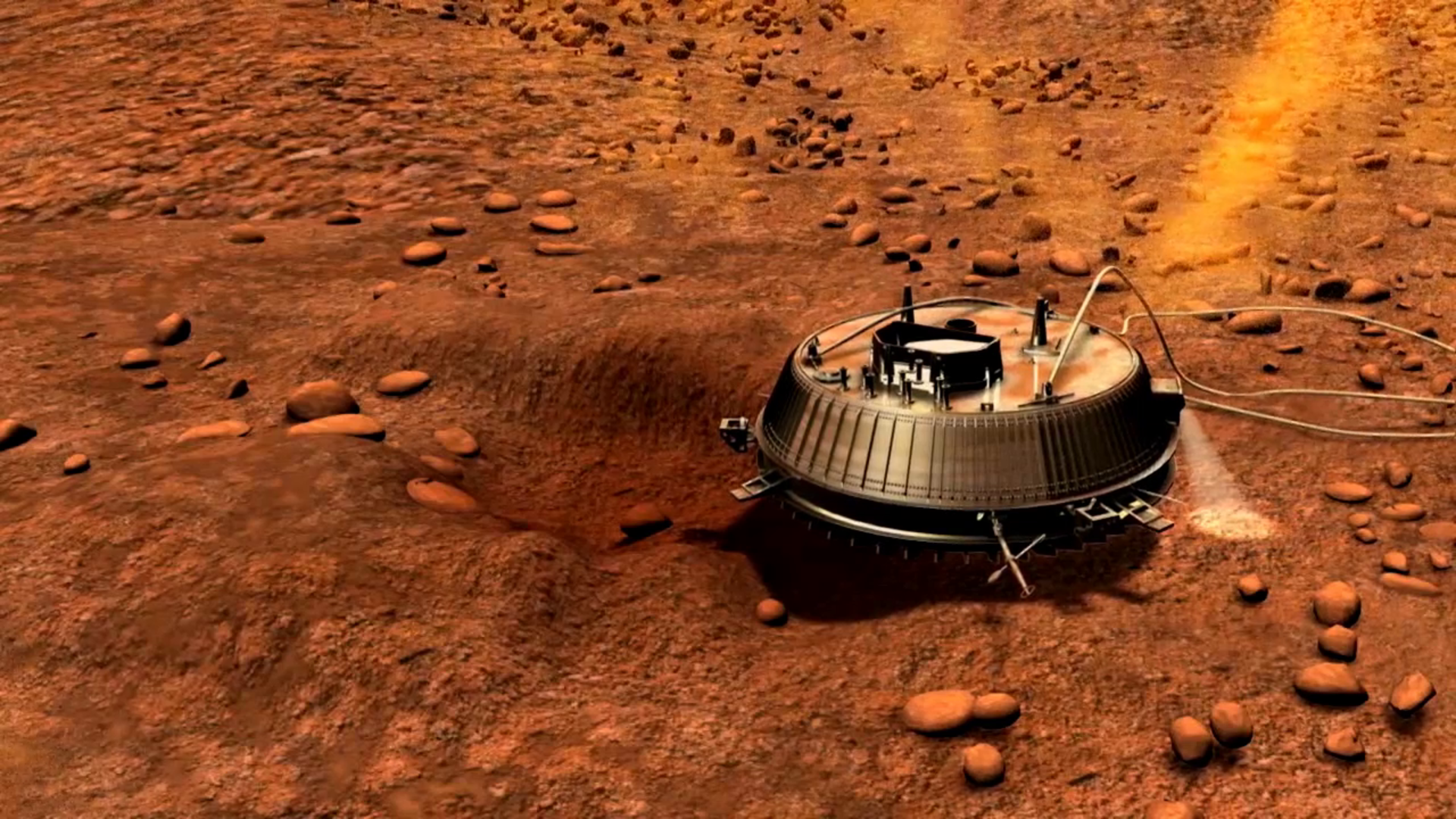
Access the video
Huygens’ risky descent lasted for 2 hours and 27 minutes, and the data the small probe gathered went on to facilitate a wealth of discoveries about this fascinating moon.
The lander returned the first in situ measurements of Titan’s atmosphere, determining its pressure, density and temperature from an altitude of 1400km down to the surface. The probe’s Doppler Wind Experiment (DWE) spotted strong east-west winds in the moon’s atmosphere, some of which rotated faster than the moon itself. It shed light on why Titan’s atmosphere contains methane, nitrogen, and tiny aerosols, and in what quantities, and detected signs of geological processes and features in the moon’s interior such as cryovolcanism and, potentially, a large subsurface ocean.
By cutting through and exploring the thick haze that enshrouds the moon, the probe also helped scientists to visualise the surface of Titan, returning evidence of past watery activity, such as dried up riverbeds and drainage networks and long-empty lake basins, and observations of the vast dunes of sand and ice.
However, one thing remained a mystery: why Huygens spun in the ‘wrong’ direction during its descent. The probe was released from Cassini spinning anti-clockwise at a rate of 7.5 rotations per minute. Due to the design of the probe, its spin rate helped to keep Huygens stable firstly as it spent three weeks coasting down to Titan, and then as it eventually entered the moon’s atmosphere.
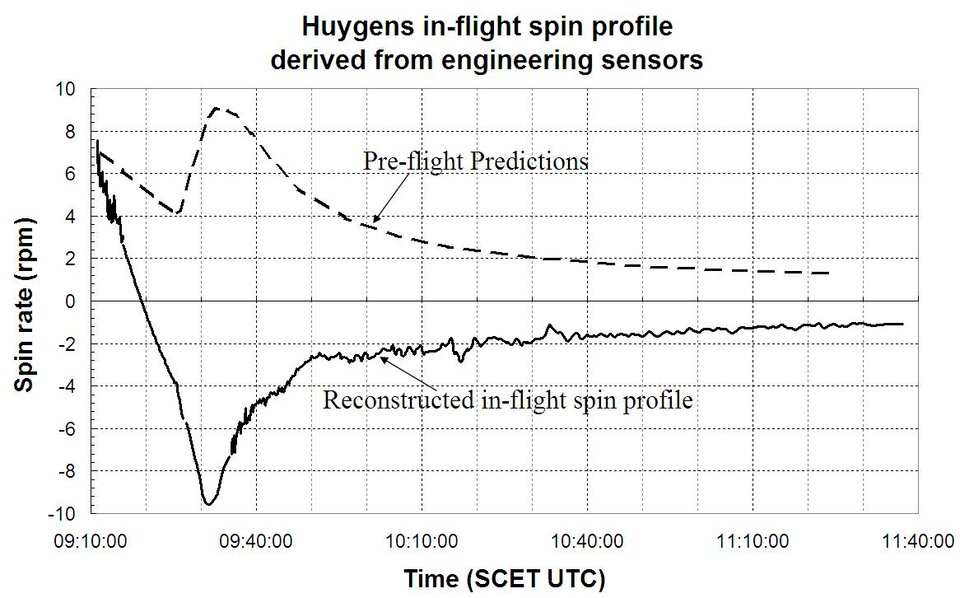
Although Huygens initially behaved as anticipated, during descent the probe’s spin rate decreased far more rapidly than expected, before reversing after approximately 10 minutes to adopt a clockwise direction.
It kept spinning this way for the remaining 2 hours and 15 hours of descent; luckily, the magnitude of this reversed spin was similar to that expected by the researchers, meaning that the unexpected flip affected the timing of the planned observations, but did not dramatically affect their quality.
Previous studies have investigated this behaviour (for example a study conducted by Vorticity in 2014–2015) and recent subsonic wind tunnel testing at the PRISME Laboratory at the University of Orléans, France, now confirms the main cause. The study was carried out from 2017 to 2019 under an ESA contract with LPC2E/CNRS-University of Orléans.

Huygens was equipped with 36 angled vanes that were used to control the spin of the descent module. However, two of the probe’s main appendages, the Separation Subsystem (SEPS) and the Radar Altimeter (RA) antennae, actually produced an unexpected torque opposite to that produced by the vanes. This effect was amplified as the vanes altered the gas flow around the descent module in a way that enhanced the amplitude of the ‘negative torque’ – the effect that made Huygens flip its direction of spin – until it exceeded the influence of the vanes.
The resolution of this engineering mystery will help inform the design of entry probes in the future, furthering our exploration of the Solar System.

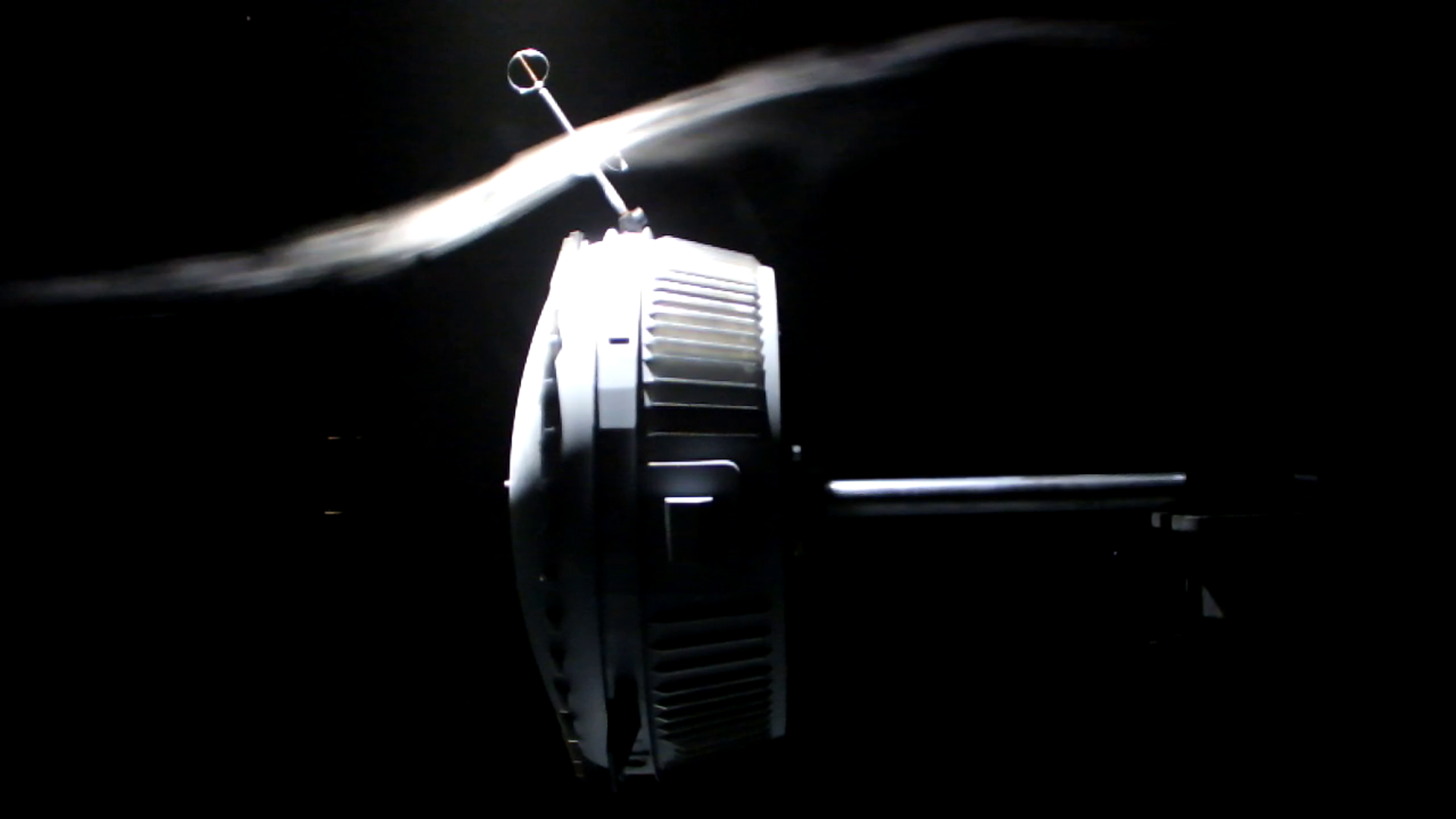
Access the video
There were also indications that the Huygens Atmospheric Structure Instrument (HASI) booms might have not been fully deployed during the descent, so specific tests were performed in three different configurations – stowed, deployed, and half-deployed – and confirmed that a ‘negative torque’ can arise under a non-symmetric deployment. This effect is under further investigation.
Notes for editors
A number of students, most of them from Polytech Orléans as interns in the LPC2E and PRISME research laboratories (CNRS-University of Orléans), collaborated and participated in the testing.
Preliminary results from this study were presented at the International Planetary Probe Workshop conferences in 2018 and 2019.
For more information, please contact:
Miguel Pérez-Ayúcar
Aurora Technology B.V. for ESA
European Space Astronomy Centre (ESAC)
Villanueva de la Cañada, Madrid, Spain
Email: miguel.perez.ayucar@sciops.esa.int
Nicolas Altobelli
ESA Cassini-Huygens Project Scientist
Email: nicolas.altobelli@esa.int














 Germany
Germany
 Austria
Austria
 Belgium
Belgium
 Denmark
Denmark
 Spain
Spain
 Estonia
Estonia
 Finland
Finland
 France
France
 Greece
Greece
 Hungary
Hungary
 Ireland
Ireland
 Italy
Italy
 Luxembourg
Luxembourg
 Norway
Norway
 The Netherlands
The Netherlands
 Poland
Poland
 Portugal
Portugal
 Czechia
Czechia
 Romania
Romania
 United Kingdom
United Kingdom
 Slovenia
Slovenia
 Sweden
Sweden
 Switzerland
Switzerland


























